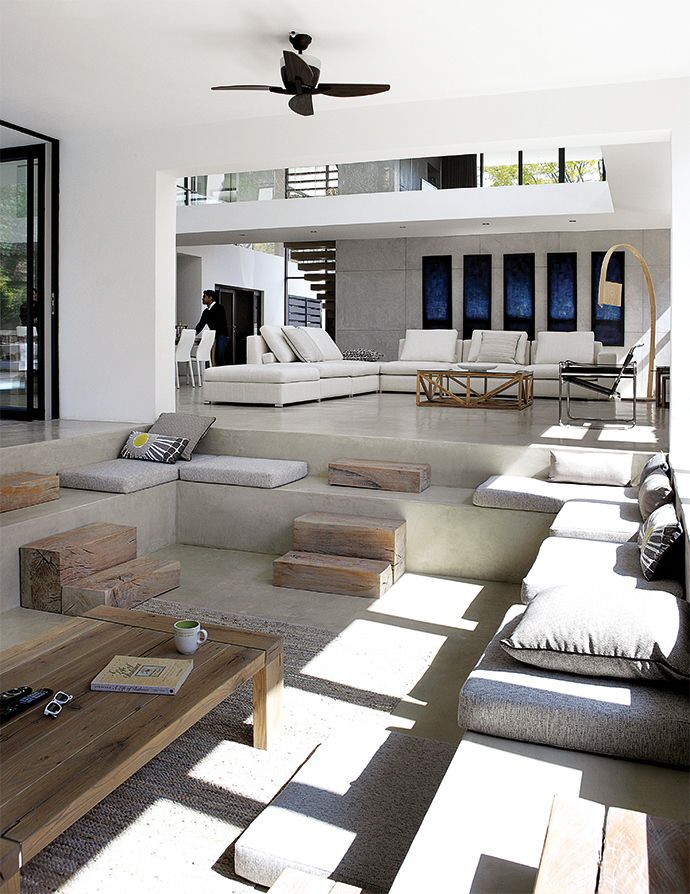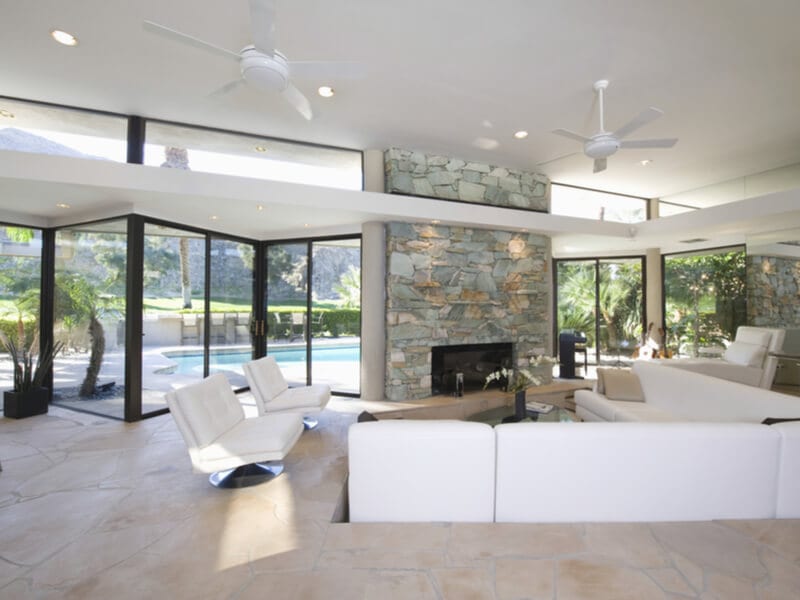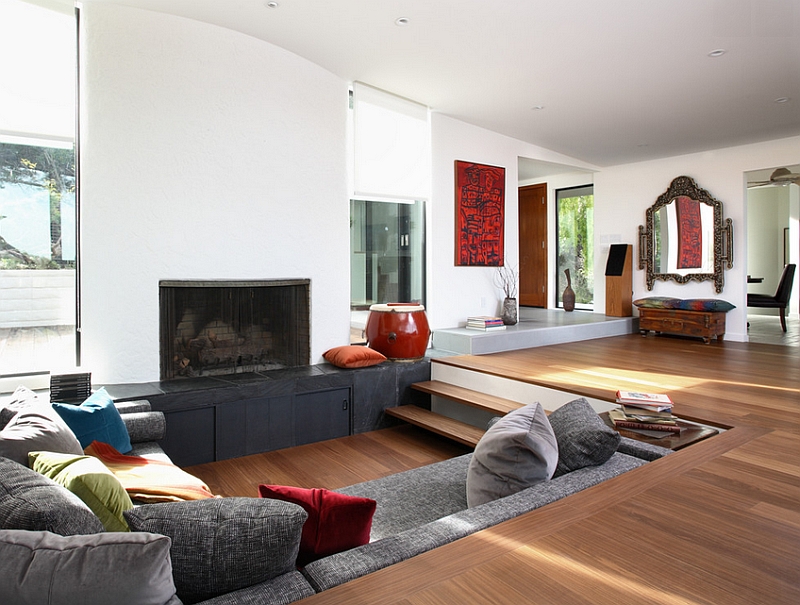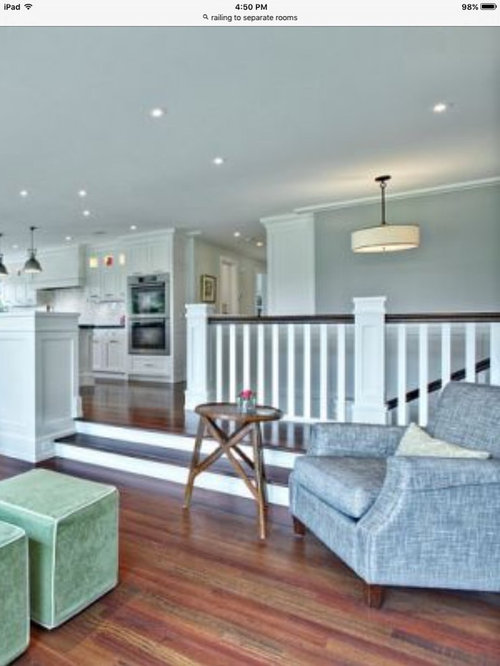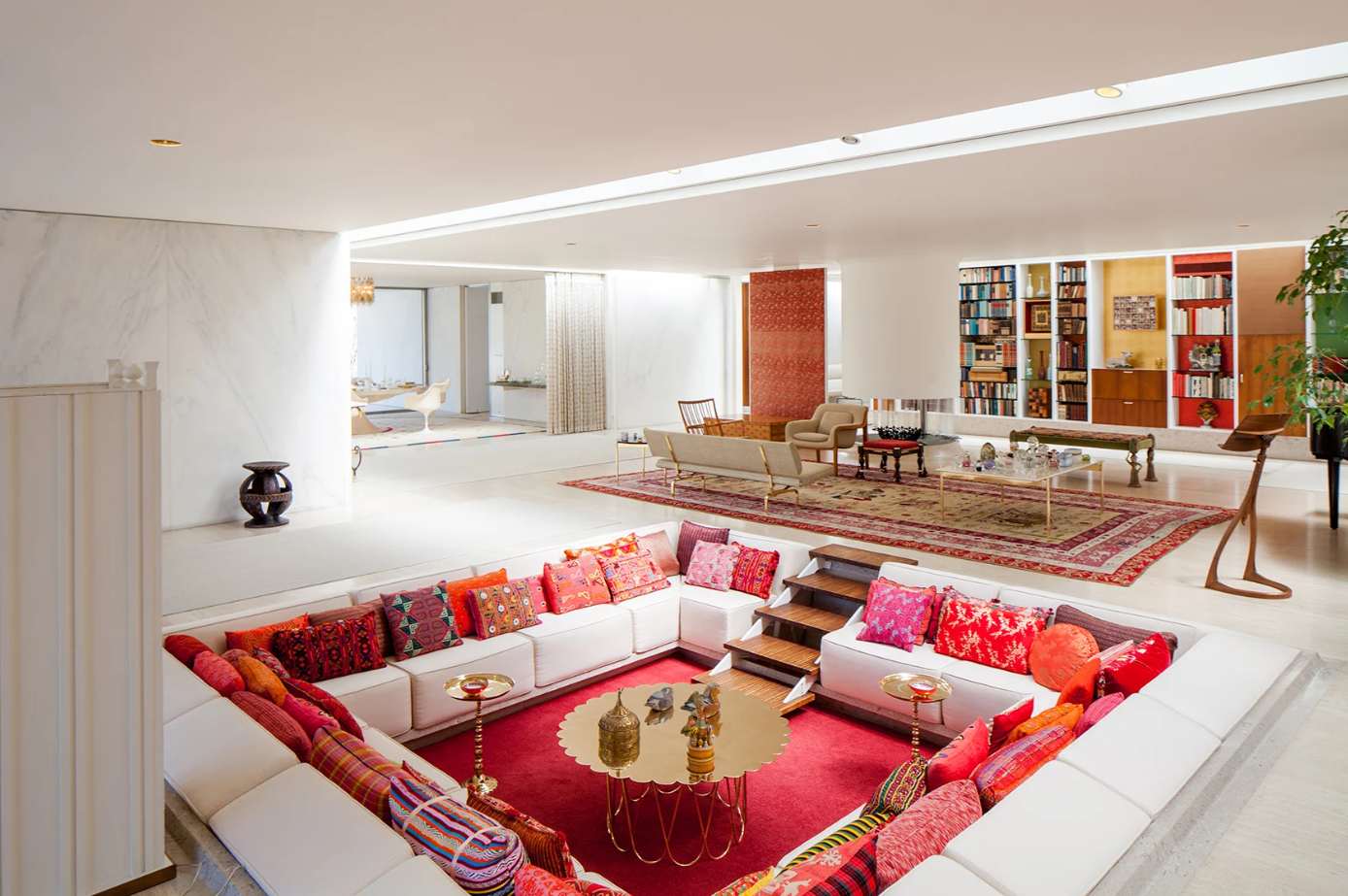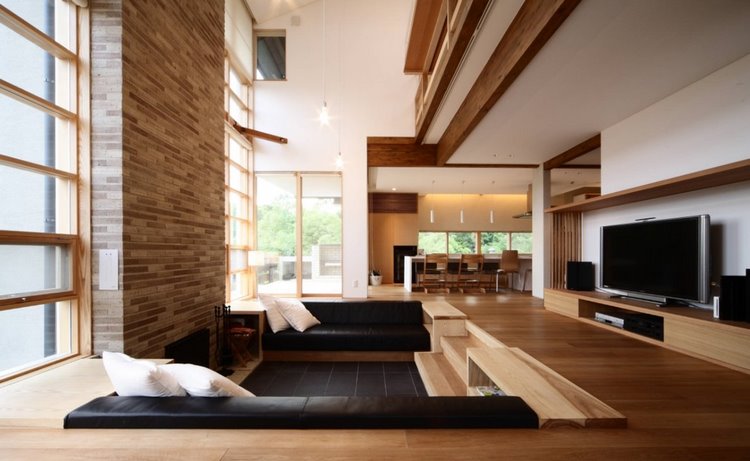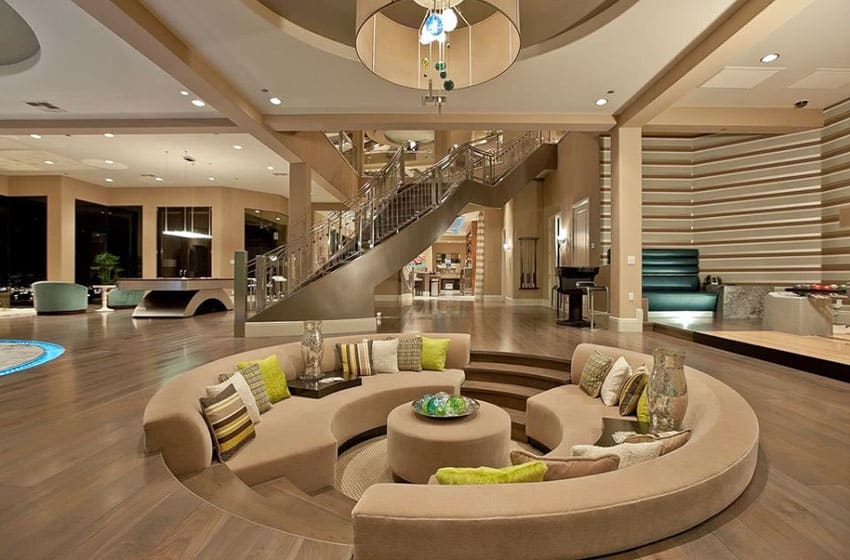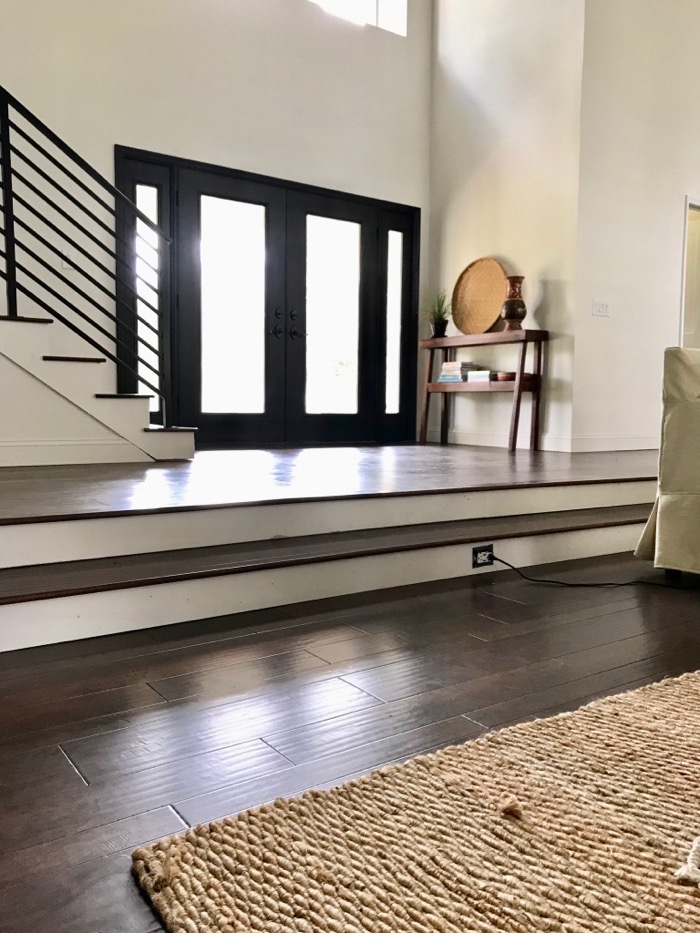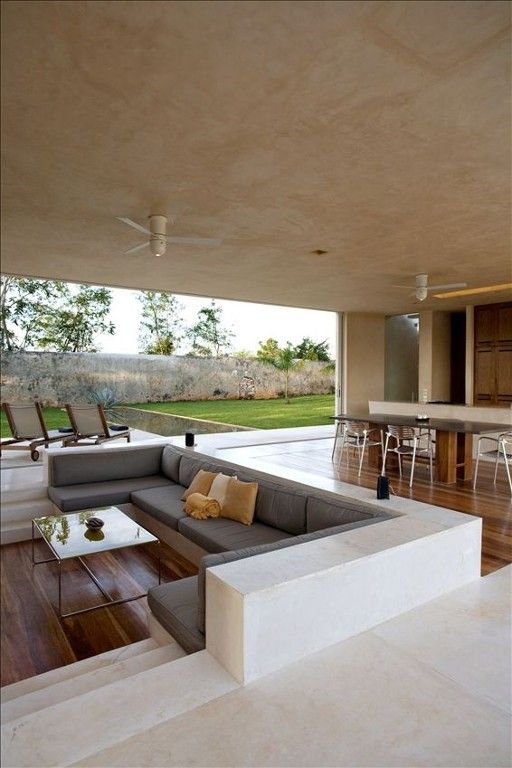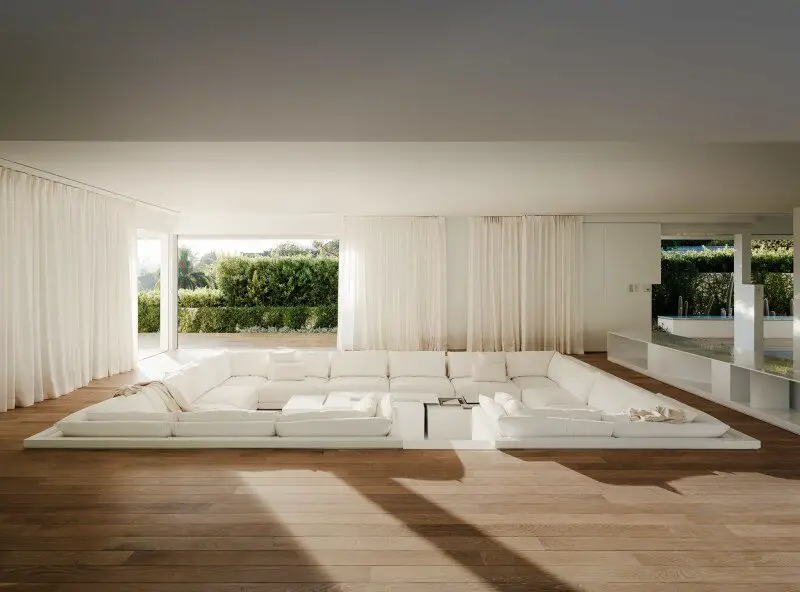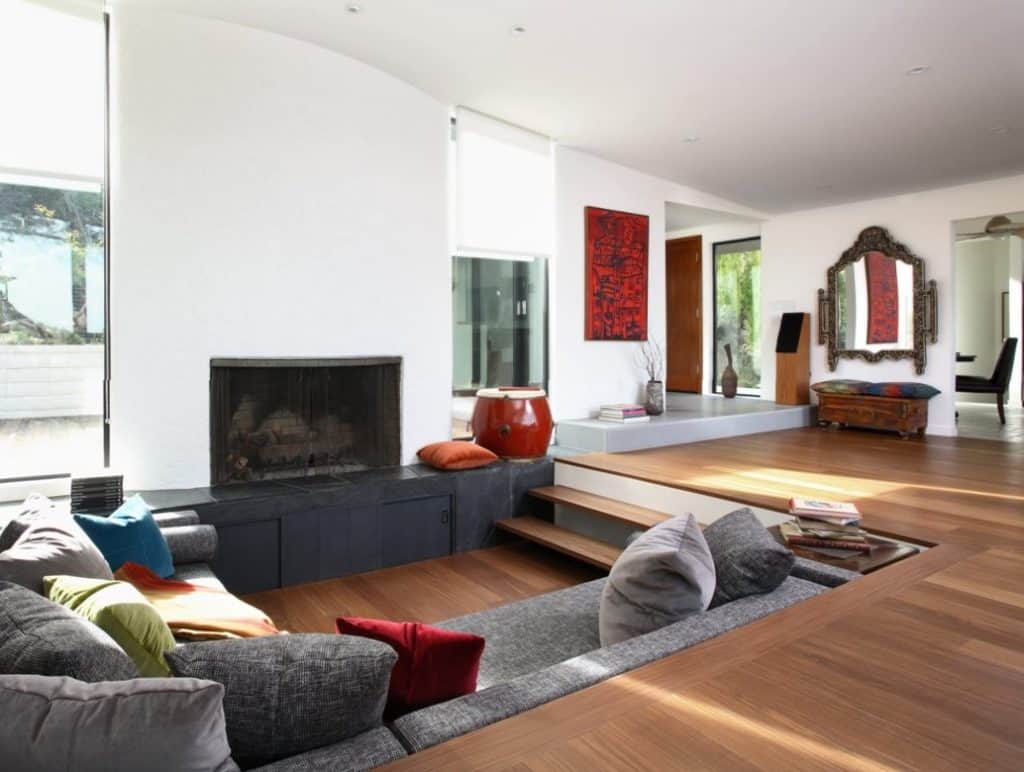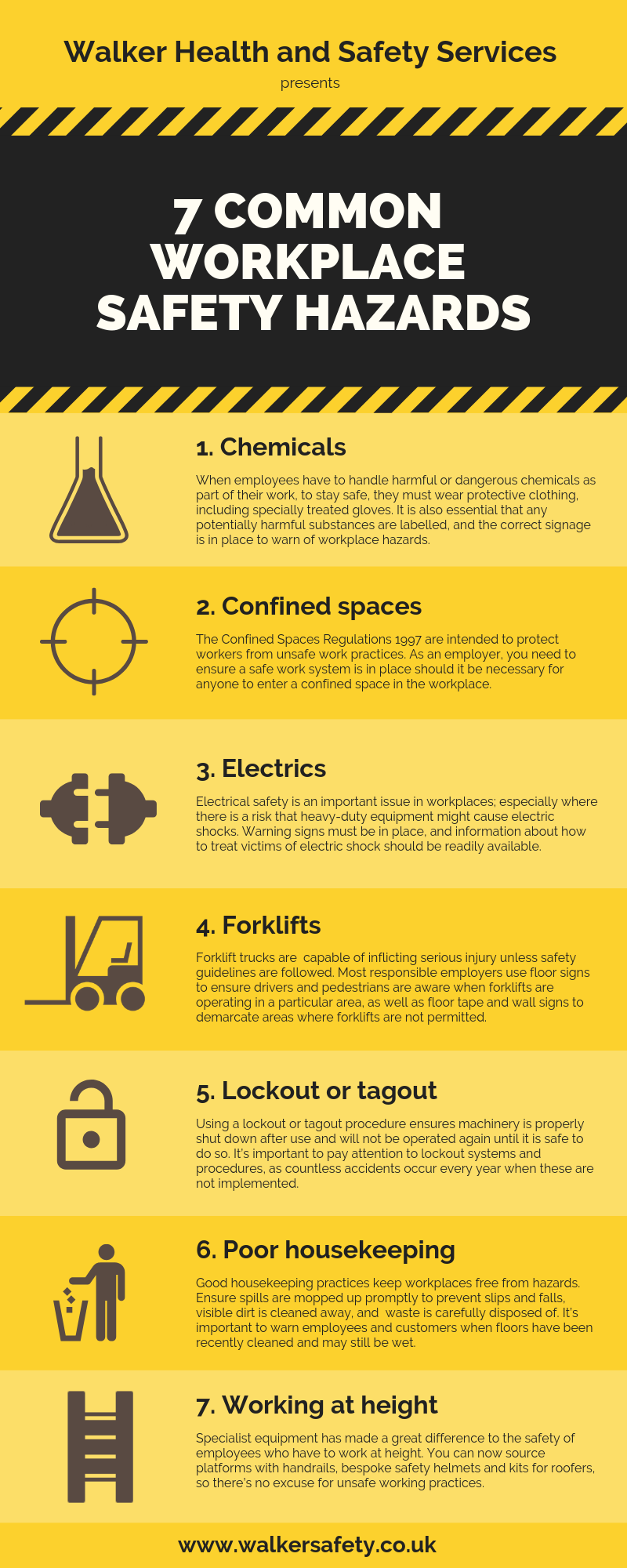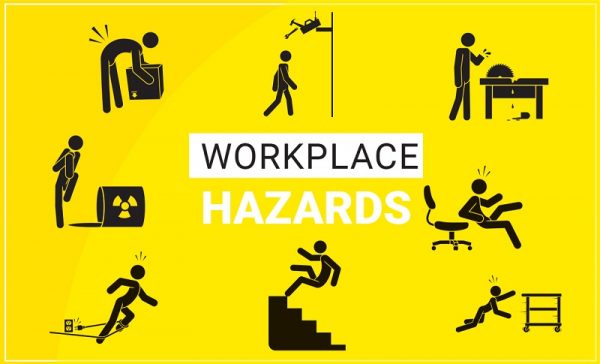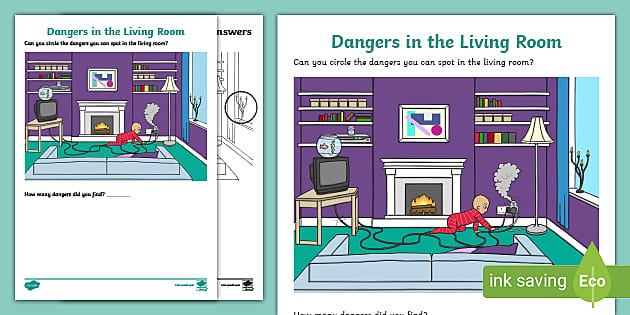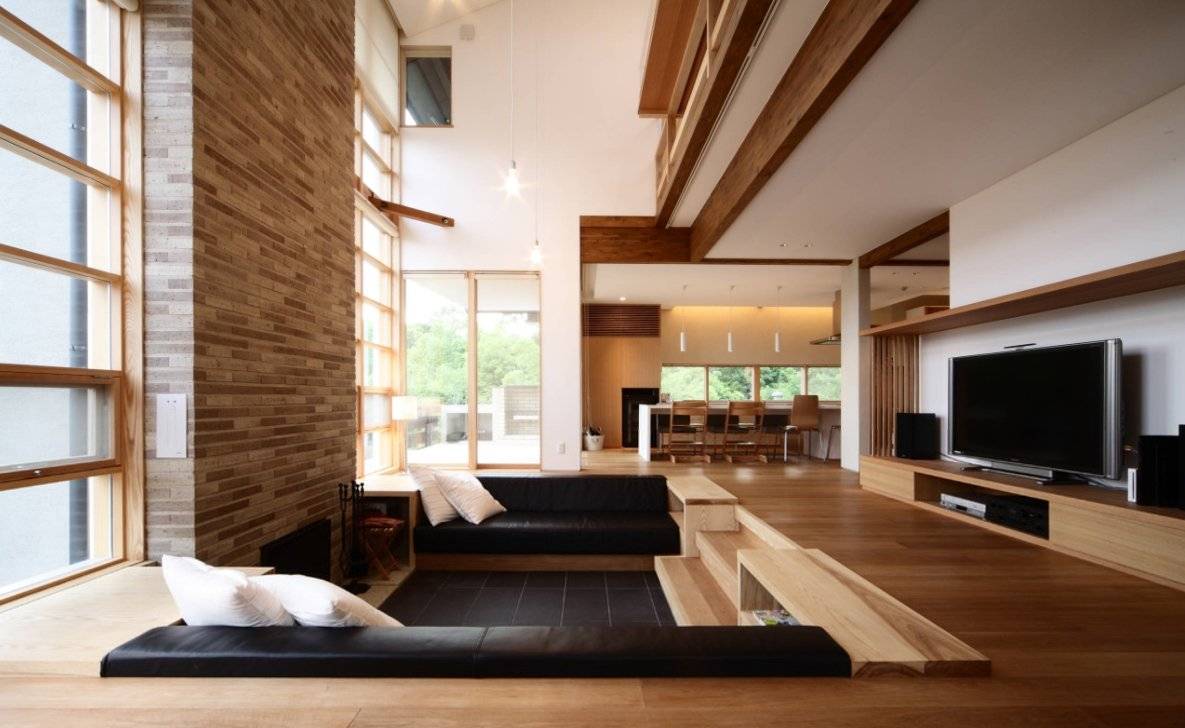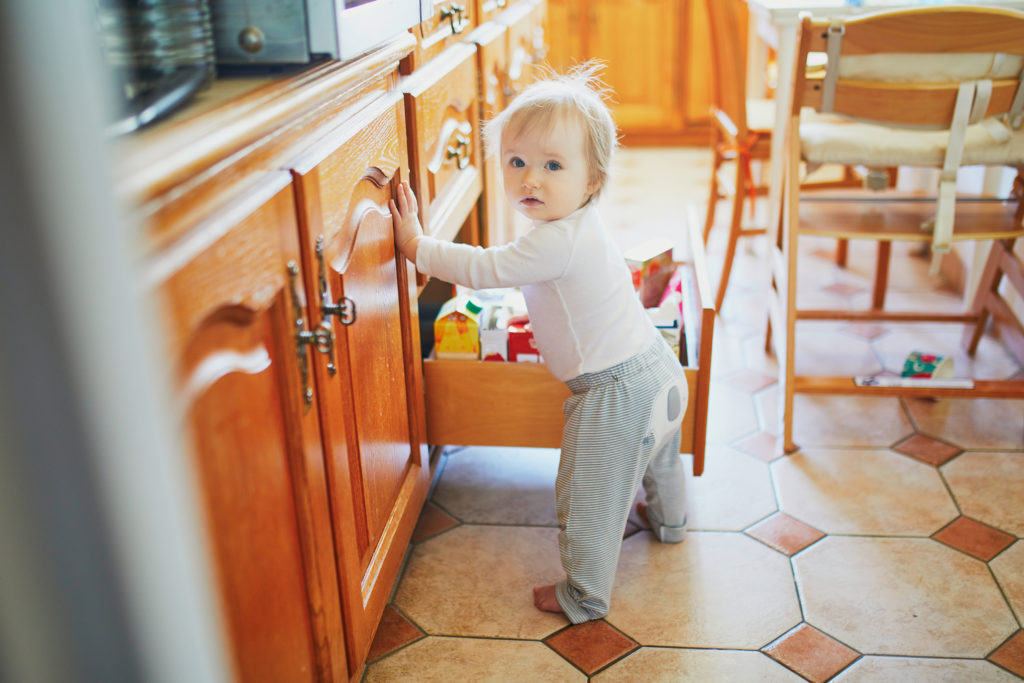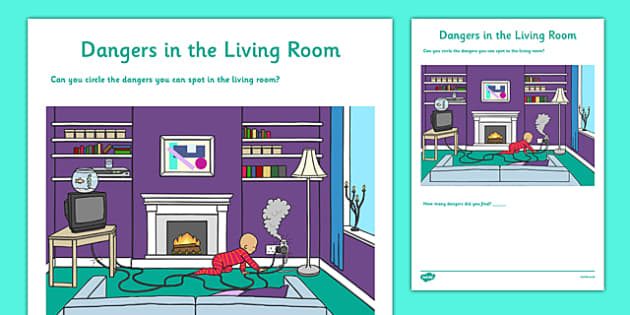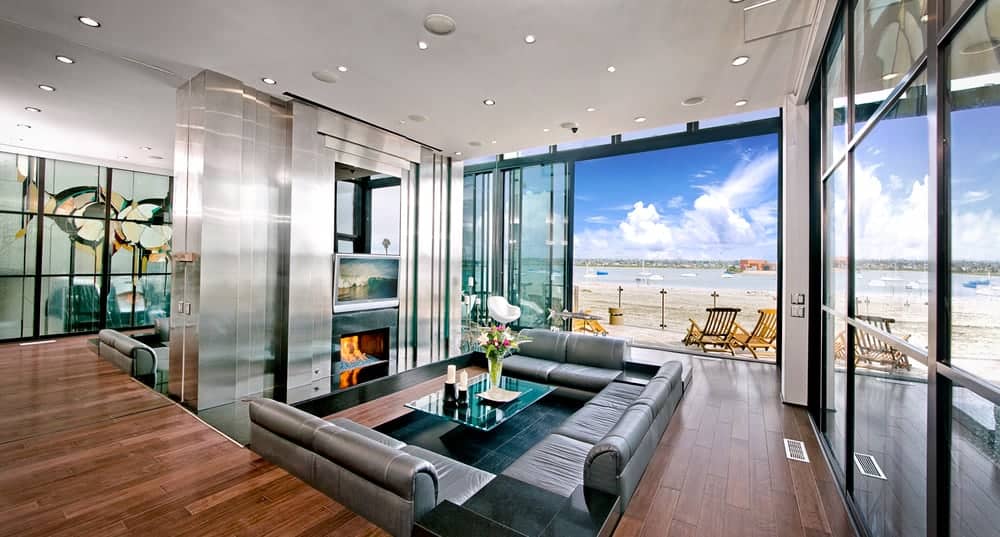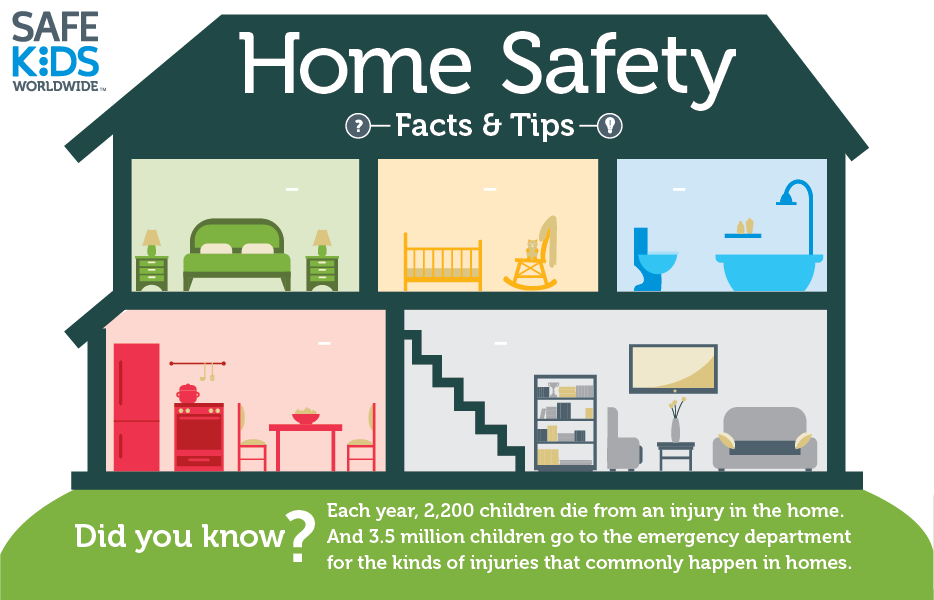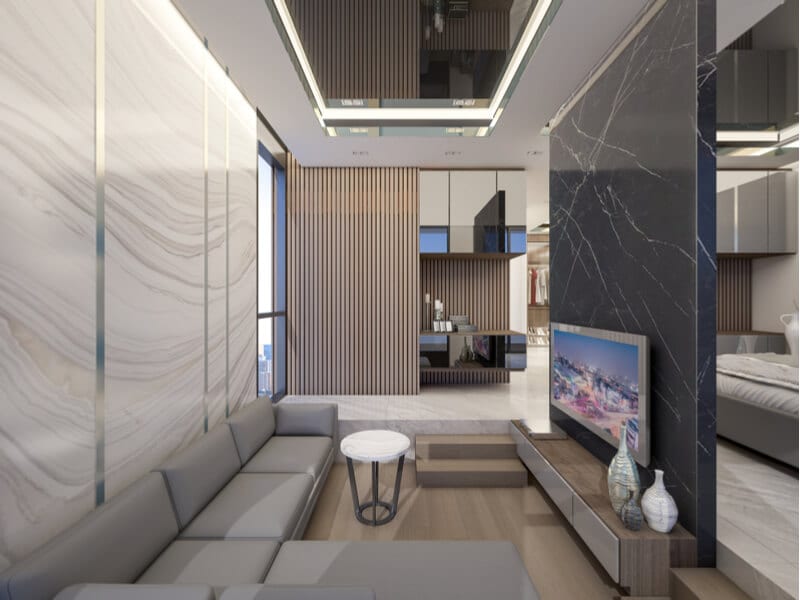A sunken living room can add a unique and stylish touch to your home, but it also comes with its own set of safety concerns. From tripping hazards to potential falls, there are several risks to consider when designing and using a sunken living room. However, with some careful planning and precautions, you can create a safe and functional space that still maintains its aesthetic appeal. First and foremost, when designing your sunken living room, it's important to consider the placement of stairs or ramps. These should be located in a well-lit area and have sturdy handrails for support. It's also a good idea to use non-slip materials for the stairs or ramps to prevent accidents. Additionally, it's crucial to keep the edges of the sunken area clearly marked with bold or highlighted tape or paint. This will help prevent anyone from accidentally stepping or tripping off the edge. If you have young children or pets, you may want to consider using a safety gate to block off the sunken area when it's not in use. Another important aspect of sunken living room safety is proper lighting. Make sure the area is well-lit at all times, especially during the evening or when hosting guests. This will not only help prevent accidents, but it will also enhance the overall atmosphere of the room. If you have a fireplace or other potentially hazardous features in your sunken living room, it's essential to take extra precautions. Install a screen or barrier around the fireplace to prevent burns, and be sure to keep any flammable items at a safe distance. You may also want to consider childproofing any outlets or electrical cords in the room.1. Sunken Living Room Safety: Tips for Creating a Safe Space
As mentioned, having a sunken living room can pose a threat to children if proper safety measures are not taken. However, this doesn't mean you have to sacrifice style for safety. Here are some tips for creating a safe and child-friendly sunken living room: First and foremost, install safety gates at the top and bottom of any stairs or ramps leading to the sunken area. This will prevent young children from accessing the space without supervision. You can also consider using a soft, cushioned material for the flooring of the sunken area to minimize any potential injuries from falls. It's also important to keep any sharp or hazardous objects out of reach. This includes furniture with sharp edges, glass decor, and small items that could be a choking hazard. Consider using rounded or padded furniture and keeping fragile items in higher, less accessible areas. When choosing a color scheme or design for your sunken living room, opt for bold or bright colors that will catch a child's attention and make them more aware of the space. You can also incorporate fun and playful elements, such as colorful pillows or wall decals, to make the room more inviting for children. Lastly, it's important to educate your children about the potential dangers of the sunken living room and the precautions they should take when using the space. This will not only help keep them safe but also instill good safety habits for the future.2. How to Make Your Sunken Living Room Safe for Children
While sunken living rooms can add an interesting and modern touch to a home, they also come with a set of potential hazards. Here are some of the most common dangers of sunken living rooms and how to avoid them: Tripping hazards: As mentioned earlier, the edges of the sunken area should be clearly marked and well-lit to prevent tripping. It's also important to keep the space clutter-free and avoid placing furniture or decor near the edges. Falls: Falls are one of the most significant risks associated with sunken living rooms. To prevent accidents, make sure stairs or ramps leading to the sunken area are well-constructed and have proper handrails. Keep the area well-lit and use slip-resistant materials for the flooring. Fire hazards: If you have a fireplace or other heat source in your sunken living room, make sure to install a barrier or screen to prevent burns. Keep any flammable items at a safe distance and never leave a fire unattended. Electrical hazards: Be sure to childproof any outlets or electrical cords in the sunken living room. Use cord covers or hide them behind furniture to prevent children or pets from accessing them. Water hazards: If your sunken living room has a pool or water feature nearby, make sure to take extra precautions. Install a fence or safety cover around the pool, and always supervise children around water.3. The Dangers of Sunken Living Rooms and How to Avoid Them
While there are certainly risks associated with sunken living rooms, they can still be a safe and enjoyable space with the right precautions. Here are some key points to keep in mind when it comes to sunken living room safety: Proper lighting and clearly marked edges are essential for preventing falls and accidents. Sturdy handrails and slip-resistant materials should be used for stairs or ramps leading to the sunken area. If you have children or pets, consider using safety gates to block off the sunken area when it's not in use. Install a screen or barrier around any potentially hazardous features, such as fireplaces or pools. Childproof outlets and electrical cords to prevent accidents. Keep any sharp or fragile items out of reach and opt for child-friendly decor and colors.4. Sunken Living Room Safety: What You Need to Know
Now that you're aware of the potential hazards and precautions for sunken living rooms, it's time to focus on creating a space that is both safe and stylish. Here are some tips for achieving a balance between safety and design: Choose slip-resistant and durable materials for the flooring, such as carpet or rubber. These will not only help prevent accidents but also add a cozy and comfortable feel to the room. Use proper lighting to illuminate the space and highlight any potential hazards. Incorporate safety features, such as handrails and safety gates, into the design of the room. These can be made to blend in with the overall aesthetic of the space. Choose furniture with rounded or padded edges to reduce the risk of injuries. Keep the space clutter-free and avoid placing furniture or decor near the edges of the sunken area. Consider using bright and playful colors and patterns to make the room more inviting and child-friendly.5. Creating a Safe and Stylish Sunken Living Room
When it comes to sunken living room safety, there are a few common hazards that homeowners should be aware of: Tripping hazards: As mentioned earlier, the edges of the sunken area should be clearly marked and well-lit to prevent tripping. It's also crucial to keep the area free of clutter and avoid placing furniture or decor near the edges. Falls: Falls are one of the most significant risks associated with sunken living rooms. To prevent accidents, make sure stairs or ramps leading to the sunken area are well-constructed and have proper handrails. Keep the area well-lit and use slip-resistant materials for the flooring. Fire hazards: If you have a fireplace or other heat source in your sunken living room, make sure to install a barrier or screen to prevent burns. Keep any flammable items at a safe distance and never leave a fire unattended. Electrical hazards: Be sure to childproof any outlets or electrical cords in the sunken living room. Use cord covers or hide them behind furniture to prevent children or pets from accessing them. Water hazards: If your sunken living room has a pool or water feature nearby, make sure to take extra precautions. Install a fence or safety cover around the pool, and always supervise children around water.6. Sunken Living Room Safety: Common Hazards and How to Address Them
If you have young children or pets, childproofing your sunken living room is crucial for their safety. Here are some tips and tricks for childproofing your sunken living room: Install safety gates at the top and bottom of any stairs or ramps leading to the sunken area. Use a soft, cushioned material for the flooring of the sunken area to minimize potential injuries from falls. Choose child-friendly furniture with rounded or padded edges and keep fragile items out of reach. Childproof outlets and electrical cords using covers or by hiding them behind furniture. Opt for bright and playful colors and patterns to make the room more inviting for children.7. Childproofing Your Sunken Living Room: Tips and Tricks
When it comes to sunken living room safety, there are a few essential precautions that every homeowner should take: Install proper lighting to illuminate the space and highlight any potential hazards. Clearly mark the edges of the sunken area with bold or highlighted tape or paint. Use non-slip materials for stairs or ramps leading to the sunken area. Keep the area free of clutter and avoid placing furniture or decor near the edges. Install safety features, such as handrails and safety gates, to prevent accidents.8. Sunken Living Room Safety: Essential Precautions to Take
Creating a sunken living room that is both safe and functional requires careful planning and consideration. Here are some tips to keep in mind when designing your sunken living room: Choose durable and slip-resistant materials for the flooring, such as carpet or rubber. Install proper lighting to illuminate the space and highlight any potential hazards. Use non-slip materials for stairs or ramps leading to the sunken area. Incorporate safety features, such as handrails and safety gates, into the design of the room. Opt for child-friendly furniture with rounded or padded edges.9. Designing a Safe and Functional Sunken Living Room
As a homeowner, it's essential to consider sunken living room safety for the well-being of your family and guests. Here are some important considerations to keep in mind: Proper lighting and clearly marked edges are crucial for preventing falls and accidents. Install safety gates at the top and bottom of any stairs or ramps leading to the sunken area. Choose slip-resistant and durable materials for the flooring. Keep the area free of clutter and avoid placing furniture or decor near the edges. Childproof outlets and electrical cords to prevent accidents. Consider using bright and playful colors and patterns to make the room more inviting and child-friendly. In conclusion, while there are certainly risks associated with sunken living rooms, they can still be a safe and enjoyable space with the right precautions. By following these tips, you can create a stylish and functional sunken living room that prioritizes safety for everyone who uses it.10. Sunken Living Room Safety: Important Considerations for Homeowners
The Importance of Sunken Living Room Safety in House Design

The Rise of Sunken Living Rooms
 Sunken living rooms have become increasingly popular in modern house design. Not only do they add a unique and stylish touch to a home, but they also create a sense of openness and flow between different living spaces. These rooms are typically located one or two steps below the main floor level, giving them a sunken effect and creating a cozy and intimate atmosphere. However, as with any design element, it is essential to consider safety precautions when incorporating a sunken living room into your home.
Sunken living rooms have become increasingly popular in modern house design. Not only do they add a unique and stylish touch to a home, but they also create a sense of openness and flow between different living spaces. These rooms are typically located one or two steps below the main floor level, giving them a sunken effect and creating a cozy and intimate atmosphere. However, as with any design element, it is essential to consider safety precautions when incorporating a sunken living room into your home.
The Potential Hazards of Sunken Living Rooms
 While sunken living rooms can add aesthetic value to a home, they also pose potential safety hazards. The main concern is the risk of trips and falls, especially for young children and older adults who may have difficulty navigating the steps. Additionally, if the steps are not properly lit, there is a higher chance of accidents occurring, especially at night. It is crucial to address these safety concerns when designing a sunken living room to ensure the well-being of everyone in the household.
While sunken living rooms can add aesthetic value to a home, they also pose potential safety hazards. The main concern is the risk of trips and falls, especially for young children and older adults who may have difficulty navigating the steps. Additionally, if the steps are not properly lit, there is a higher chance of accidents occurring, especially at night. It is crucial to address these safety concerns when designing a sunken living room to ensure the well-being of everyone in the household.
Implementing Safety Measures
 Fortunately, there are several simple yet effective ways to enhance sunken living room safety. First and foremost, make sure the steps leading to the sunken area are clearly visible and well-lit. Consider installing handrails on either side of the steps for added stability and support. Additionally, placing non-slip mats or carpets on the steps can prevent slips and falls. It is also essential to keep the sunken area clean and clutter-free to avoid any potential hazards.
Fortunately, there are several simple yet effective ways to enhance sunken living room safety. First and foremost, make sure the steps leading to the sunken area are clearly visible and well-lit. Consider installing handrails on either side of the steps for added stability and support. Additionally, placing non-slip mats or carpets on the steps can prevent slips and falls. It is also essential to keep the sunken area clean and clutter-free to avoid any potential hazards.
Designing for Safety
 When incorporating a sunken living room into your house design, it is crucial to keep safety in mind. Consider placing the sunken area in a corner or away from high traffic areas to reduce the risk of accidents. You can also use decorative elements such as low walls or railings to indicate the change in floor level and prevent people from accidentally stepping into the sunken area. It is also essential to ensure that the steps leading to the sunken area are not too steep or narrow, making them easier to navigate.
Safety should always be a top priority when designing a home, and this includes incorporating sunken living rooms into the design. By implementing these safety measures and designing with caution, you can enjoy the unique and stylish addition of a sunken living room without compromising the well-being of your household.
When incorporating a sunken living room into your house design, it is crucial to keep safety in mind. Consider placing the sunken area in a corner or away from high traffic areas to reduce the risk of accidents. You can also use decorative elements such as low walls or railings to indicate the change in floor level and prevent people from accidentally stepping into the sunken area. It is also essential to ensure that the steps leading to the sunken area are not too steep or narrow, making them easier to navigate.
Safety should always be a top priority when designing a home, and this includes incorporating sunken living rooms into the design. By implementing these safety measures and designing with caution, you can enjoy the unique and stylish addition of a sunken living room without compromising the well-being of your household.


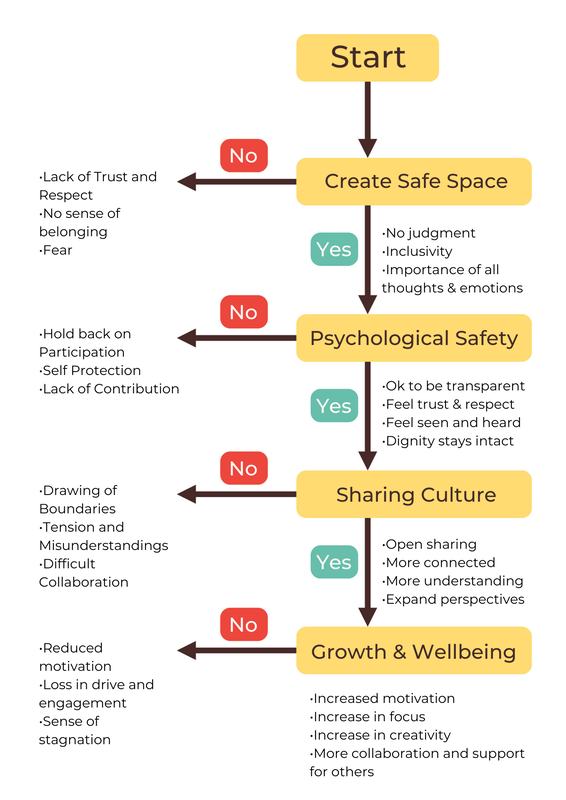
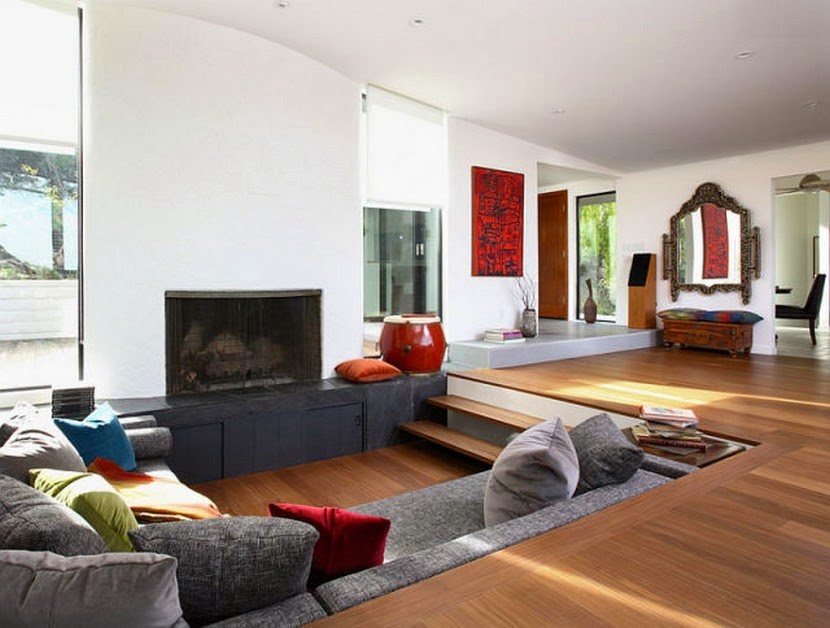

.jpg)




